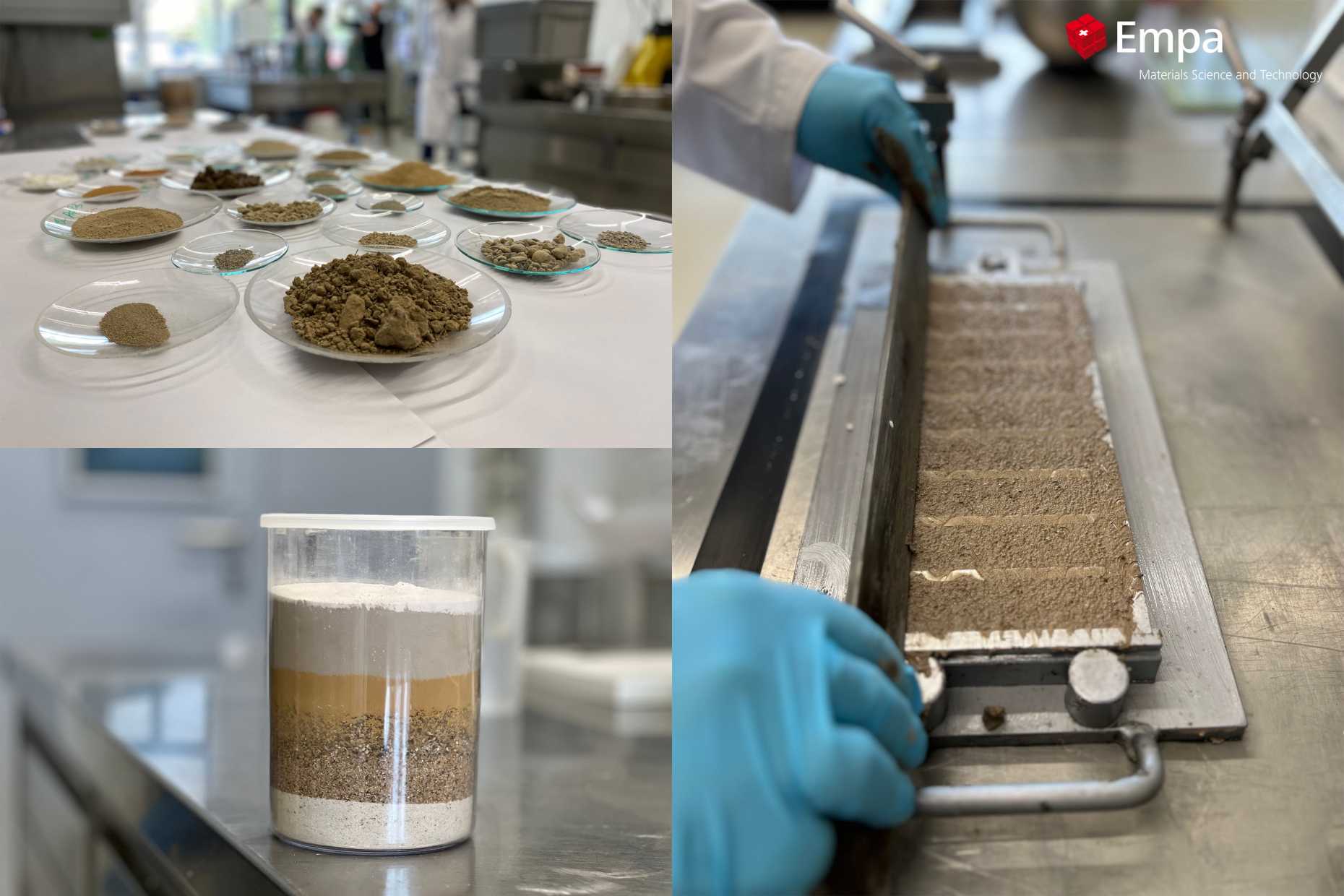Entschlüsselung der Rolle des Magnesiums in Erdmaterialien für nachhaltiges Bauen
Projektbeschreibung
The use of stabilised raw earth as a construction material is motivated by its low CO2 emissions compared to concrete, which instead accounts for about 5-9% of all anthropogenic CO2 emissions. Earthen materials cannot replace concrete for each purpose, but they may be used for non-load bearing concrete building block, as load-bearing walls for housing as well as for soft foundations if properly implemented. Raw earth is commonly stabilised with reactive calcium sources (lime or Portland cement) in order to increase its strength. However, this strong chemical hydraulic stabilisation, in addition to the use of material with high content of embodied CO2, hinders its re-use, and therefore increases largely its environmental footprint. While the stabilisation of raw earth materials (REMs) with calcium hydraulic binders is relatively well understood, the current application aims to develop fundamental insights into durable stabilisation with magnesia for REMs. The project will enable the use of earth materials for future sustainable construction, using alternative stabiliser materials in order to reduce the overall environmental footprint of the construction industry.
The following steps are planned to be investigated:
Fundamental research on the effect of Mg-additives on workability, hardening, evolution of mineralogy and microstructure of stabilised raw earth materials.
Evaluation of the effect of Mg-additives on the mechanical properties and on the reusability potential of such material.
Optimisation of the resource chain via the implementation of a characterisation method for raw earths with regard to reactivity and content of magnesium. The novelty of the project relies on the combination of a comprehensive study of chemical and physical processes involved in Mg stabilisation, together with the understanding and optimisation of criteria for the development of the new sustainable building materials.
This project contains detail studies of the hydration processes, the chemistry, the microstructure and the mechanical properties and the environmental impacts of such building materials by means of the use of a large palette of characterisation techniques and expertises available at the Concrete and Asphalt Laboratory (C&A Lab) at the Swiss Federal Laboratories for Materials Science and Technology (Empa) in Dübendorf and the Institute of Construction and Infrastructure Management (IBI), particularly at the Chair of Sustainable Construction at the Swiss Federal Institute of Technology, Zürich (ETHZ).
More info can be found externe Seite here.
